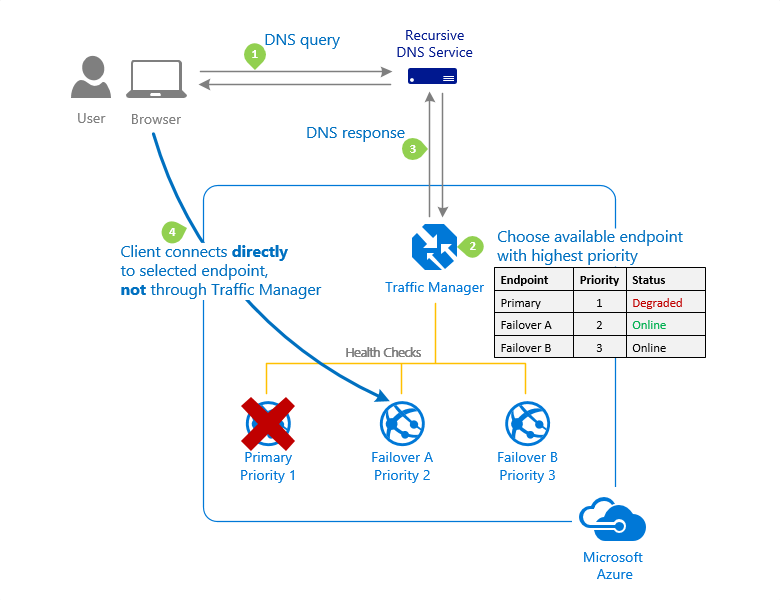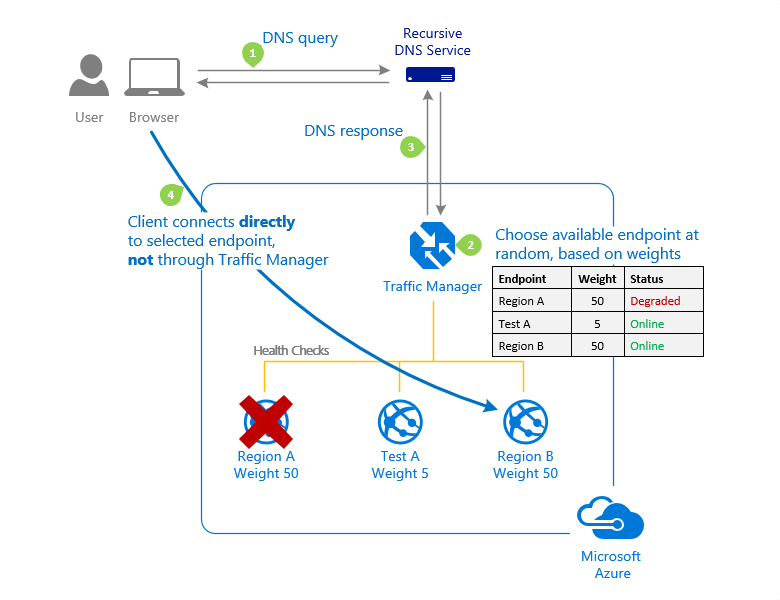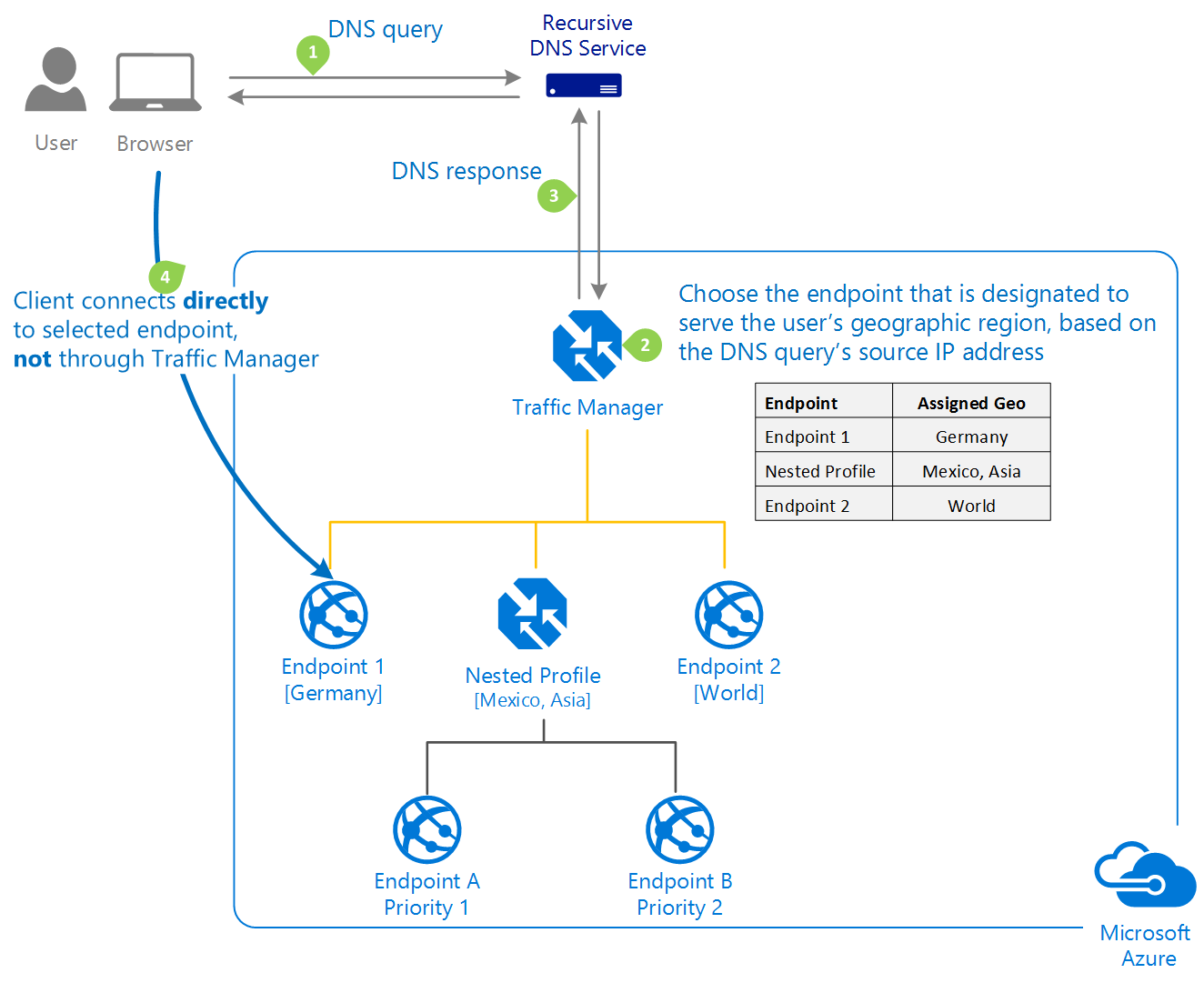Traffic Manager routing methods
Overview
Azure Traffic Manager supports four traffic-routing methods to determine how to route network traffic to the various service endpoints. Traffic Manager applies the traffic-routing method to each DNS query it receives. The traffic-routing method determines which endpoint returned in the DNS response.
There are four traffic routing methods available in Traffic Manager:
- Priority: Select Priority when you want to use a primary service endpoint for all traffic, and provide backups in case the primary or the backup endpoints are unavailable.
- Weighted: Select Weighted when you want to distribute traffic across a set of endpoints, either evenly or according to weights, which you define.
- Performance: Select Performance when you have endpoints in different geographic locations and you want end users to use the "closest" endpoint in terms of the lowest network latency.
- Geographic: Select Geographic so that users are directed to specific endpoints (Azure, External, or Nested) based on which geographic location their DNS query originates from. This empowers Traffic Manager customers to enable scenarios where knowing a user’s geographic region and routing them based on that is important. Examples include complying with data sovereignty mandates, localization of content & user experience and measuring traffic from different regions.
All Traffic Manager profiles include monitoring of endpoint health and automatic endpoint failover. For more information, see Traffic Manager Endpoint Monitoring. A single Traffic Manager profile can use only one traffic routing method. You can select a different traffic routing method for your profile at any time. Changes are applied within one minute, and no downtime is incurred. Traffic-routing methods can be combined by using nested Traffic Manager profiles. Nesting enables sophisticated and flexible traffic-routing configurations that meet the needs of larger, complex applications.



